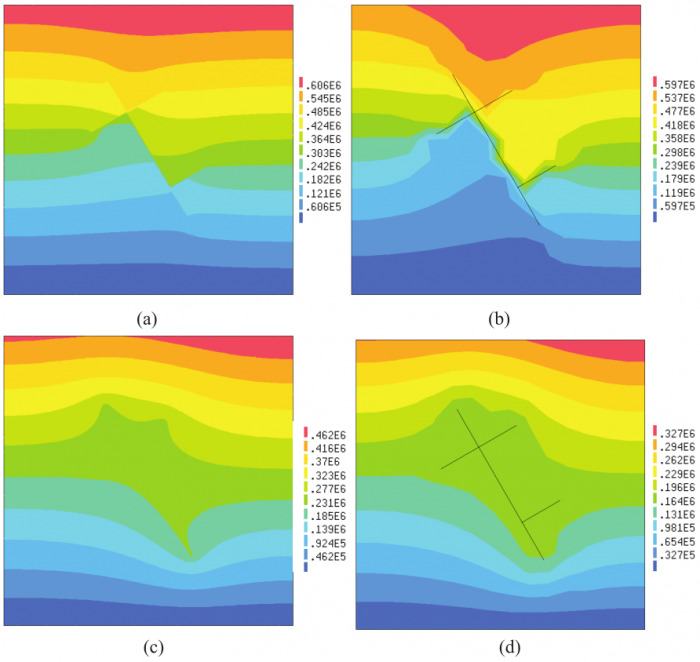Faults are geological entities of rock where relative displacement can occur in the plane of the fault. During industrial activities such as disposal of waste water or CO2, fault slip may reactivate due to the changes in hydraulic pressures and deformations of the rock matrix. The motion of faults may threaten the stability of wells, even induce seismicity. Therefore, accurate and efficient simulation techniques are required to assess the potential for fault reactivation.
We employ the extended finite element method (X-FEM) to approximate different types of discontinuous physical fields, such as strong discontinuities for displacement and strong/weak discontinuities for pressure, and the interaction between fault surfaces is modeled using the
Mohr-Coulomb criterion. We assess the reactivation of various faults triggered by a change of pressure. We also implement a new integration scheme to eliminate the need for element partitioning to integrate discontinuous functions over elements.
Some results are as follows.
(1) Fluid flow within a domain containing jagged faults (integration without element-partitioning)

Numerical model Pressure distributions for various cases
(2) Branched and intersecting faults
Comparison of meshes used in FEM and X-FEM
Comparisons of distributions of pressures using different methods
(3) Assessment of the reactivation of a typical fault

Numerical model


Distribution of pressure after 8 hours of the injection Displacement field


